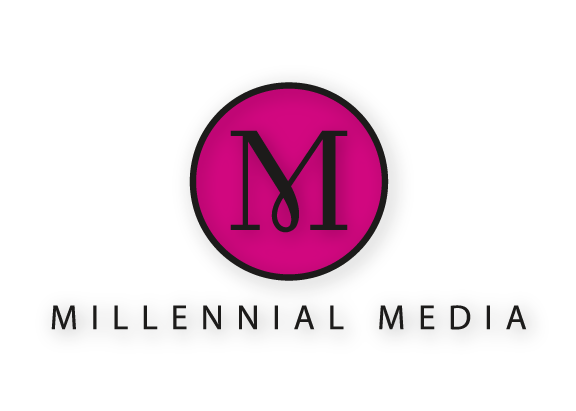Branding in Ten Simple Steps
by Mica Olinghouse
Disclosure: This page contains affiliate links. If you click through and purchase a product, we will earn a commission at no additional cost to you.
For those of you who are dreaming of publishing your first book, you will need to start considering how to brand yourself as a writer. With the dramatic transformation technology has brought to the publishing industry, it is nearly impossible for a writer to be well-known among his target audience unless he has developed a unique brand and solid platform. In fact, even Michael Hyatt, former CEO of Thomas Nelson, encourages new writers to establish their brands early before submitting their manuscripts to a publisher and an audience. In this day and age, a platform is absolutely necessary for writers to be noticed, published, publicized, and read.
So while you are writing your teaching books, devotionals, or children's stories, keep in mind these ten simple branding steps that will help move your message from your heart to the printed page.
1. DETERMINE your brand
When thinking about how to market yourself as a writer, the first thing you must consider is your brand name. Do you want to write under your real name, your full name, or a pen name? Who will be your target audience, and what is your mission as a writer? Once you've determined these crucial elements, you'll need to wrap them all up in a pretty little five-to-eight-word package. For example, I am writing some books under my full name, Mica Charity Olinghouse. Since my heart is to teach the principles of the Word of God to a certain age group, my tagline is "Empowering Millennials for Success in Life." Whatever brand name you choose, remember to make it short, catchy, and memorable.
2. DESIGN A WEBSITE
If you don't want to hire a professional graphics designer, you can easily build and host your own website through wix.com or squarespace.com. You will need this site to park all your information, book titles, and contact information for publishers, publicists, editors, and readers.
3. SET UP AN EMAIL ACCOUNT
While you may still use your regular email account for communication with your friends and family, it's a wise idea to set up a separate email address just for your writing platform. This account should be used as your primary email when communicating with editors, designers, publishers, and readers. You should also list this email address on everything connected to your book and your writing platform.
4. BLOG
This is perhaps one of the most important steps you can take as an aspiring published author. Not only does blogging polish your writing skills, but it also helps you to build an audience and a portfolio all in one.
5. GET SOCIAL
If you don't have a Facebook or Twitter account for your public writer persona, then start one today. Writing social media posts on your writer platform helps you to connect with future readers and builds interest in your future books.
6. CHOOSE YOUR COLOR SCHEME
Although writers are not known necessarily for their design sensibilities, it is still important for a published-writer-wannabe to have an unmistakable identity. In addition to words and phrases, colors and symbols are also subtle images that work together to create your overall brand. When deciding colors that fit your writing platform, think beyond just your favorite color and dive into the psychology and meaning of color. Research the different color combinations, associations, and definitions, and use the information you've discovered to create a color scheme that not only communicates who you and what you write but also connects you with your target audience.
7. INVEST IN A LOGO
Once you have decided on your name and your tagline, it's time to invest in a logo. This should be a simple design that brings in your color scheme, your name, and your tagline. Some people choose a simple design for their logo while others prefer a detailed image. I recommend taking your ideas to a graphic artist who can work with you to create just the right logo for your platform.
8. PRINT OUT BUSINESS CARDS
After you've established your name, logo, colors, and social media contact information, print it all out on a business card. A card like this should be attractive, eye-catching, and informative. Be sure to include all your contact information and your personal tagline or title and/or your book title on the card. Keep a stash of cards with you on your person at all times and be ready to hand them out to people when asked about your writing or the release date of your published book.
9. CREATE A MAILING LIST
A great way to build an audience is to acquire a readership list through an automated e-marketing service like Constant Contact or MailChimp. These online services enable you create beautiful templates to use for newsletters, promotions, and so on. Plus, they keep track of your subscribers and retain the email addresses of all those people who want to read more from you! (I personally recommend MailChimp--it's user-friendly and free!)
9. BRING IT ALL TOGETHER
Now that you've stepped out on the water, it's time to bring it all together. To create the most impact, make sure all your online and tangible platform pieces are uniform. Implement your colors and logo into your website, blog, social media, and business cards. Link up your blog to your social media accounts, and insert a subscription form to your mailing list on your website. Get creative! Think outside of the box and dream big. With a lot of hard work, awesome creative ideas, and some practical tools, you CAN be a well-known and well-read published writer!
Are you ready to take your branding to the next level?
Love it? Share it!
Recommended Reading
LOVE THIS ARTICLE?
Don’t Miss Out on Professional Tips & Secrets!
Get the Fusion Blog delivered straight to your inbox.


